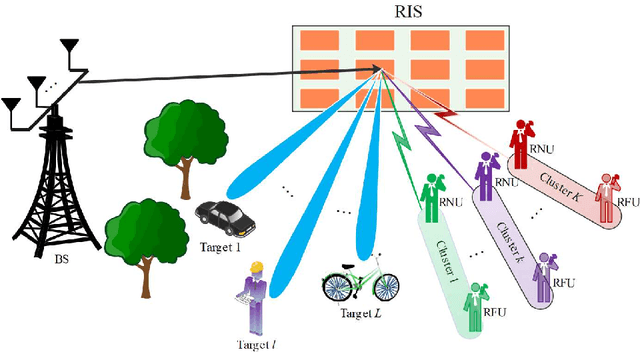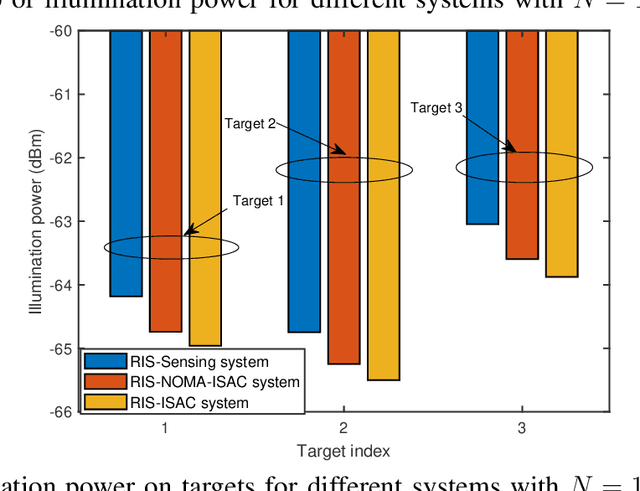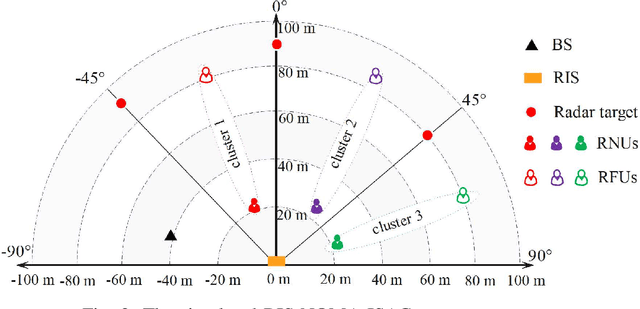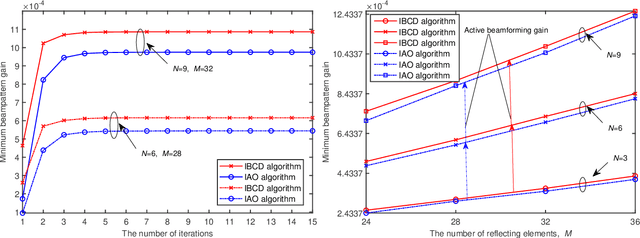Dengyin Zhang
Exploiting NOMA and RIS in Integrated Sensing and Communication
Oct 06, 2022



Abstract:A novel integrated sensing and communication (ISAC) system is proposed, where a dual-functional base station is utilized to transmit the superimposed non-orthogonal multiple access (NOMA) communication signal for serving communication users and sensing targets simultaneously. Furthermore, a new reconfigurable intelligent surface (RIS)-aided-sensing structure is also proposed to address the significant path loss or blockage of LoS links for the sensing task. Based on this setup, the beampattern gain at the RIS for the radar target is derived and adopted as a sensing metric. The objective of this paper is to maximize the minimum beampattern gain by jointly optimizing active beamforming, power allocation coefficients and passive beamforming. To tackle the non-convexity of the formulated optimization problem, the beampattern gain and constraints are first transformed into more tractable forms. Then, an iterative block coordinate descent (IBCD) algorithm is proposed by employing successive convex approximation (SCA), Schur complement, semidefinite relaxation (SDR) and sequential rank-one constraint relaxation (SRCR) methods. To reduce the complexity of the proposed IBCD algorithm, a low-complexity iterative alternating optimization (IAO) algorithm is proposed. Particularly, the active beamforming is optimized by solving a semidefinite programming (SDP) problem and the closed-form solutions of the power allocation coefficients are derived. Numerical results show that: i) the proposed RIS-NOMA-ISAC system always outperforms the RIS-ISAC system without NOMA in beampattern gain and illumination power; ii) the low-complexity IAO algorithm achieves a comparable performance to that achieved by the IBCD algorithm. iii) high beampattern gain can be achieved by the proposed joint optimization algorithms in underloaded and overloaded communication scenarios.
 Add to Chrome
Add to Chrome Add to Firefox
Add to Firefox Add to Edge
Add to Edge